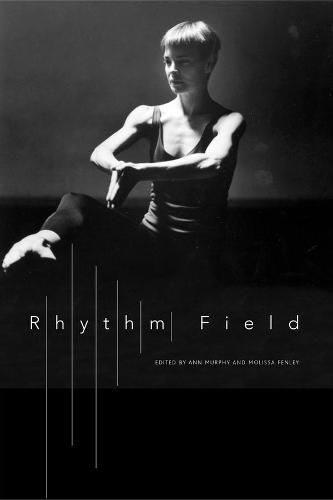Readings Newsletter
Become a Readings Member to make your shopping experience even easier.
Sign in or sign up for free!
You’re not far away from qualifying for FREE standard shipping within Australia
You’ve qualified for FREE standard shipping within Australia
The cart is loading…






Molissa Fenley, one of the most influential artists of postmodern dance, has had a lasting impact on performance. In dance, she has explored extreme effort and duration in highly crafted patterns and performed with an explosive, joyous energy that infused her work with endurance, balance, and life force. She challenged modern dance orthodoxy and redefined the character of a woman’s moving body in the late twentieth century, bringing postmodernized ritual to the stage.
Rhythm Fieldis a vivid and probing portrait of Fenley’s four-decade career, written by her fellow artists. The collection functions as a multifaceted look into one woman’s complex performing arts legacy. The result is itself an aesthetic undertaking that investigates the ways in which Fenley straddles dance traditions, art genres, and gender norms and has been a model to the field. The collection offers several scholarly analyses of the choreographer’s work, and is, above all, a vibrant record from the field.Rhythm Fieldsits at a necessary midpoint between criticism and scholarship.
$9.00 standard shipping within Australia
FREE standard shipping within Australia for orders over $100.00
Express & International shipping calculated at checkout
Molissa Fenley, one of the most influential artists of postmodern dance, has had a lasting impact on performance. In dance, she has explored extreme effort and duration in highly crafted patterns and performed with an explosive, joyous energy that infused her work with endurance, balance, and life force. She challenged modern dance orthodoxy and redefined the character of a woman’s moving body in the late twentieth century, bringing postmodernized ritual to the stage.
Rhythm Fieldis a vivid and probing portrait of Fenley’s four-decade career, written by her fellow artists. The collection functions as a multifaceted look into one woman’s complex performing arts legacy. The result is itself an aesthetic undertaking that investigates the ways in which Fenley straddles dance traditions, art genres, and gender norms and has been a model to the field. The collection offers several scholarly analyses of the choreographer’s work, and is, above all, a vibrant record from the field.Rhythm Fieldsits at a necessary midpoint between criticism and scholarship.